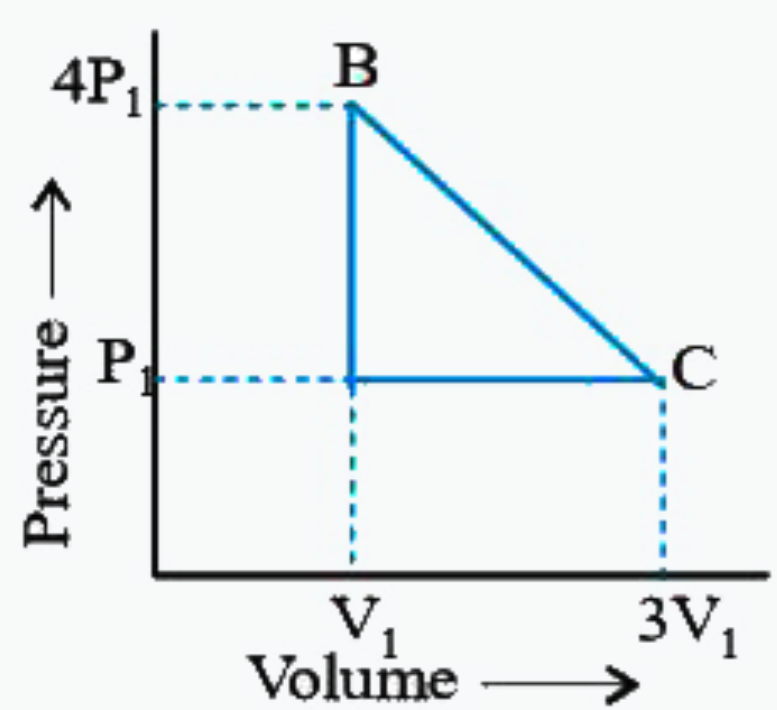One mole of an ideal gas is taken through the cyclic process ABCDA, as shown in (figure). Using the graph, calculate
(i) Work done in the processes A→B,B→C,C→DandD→A
(ii) Work done in complete cycle ABCDA
(iii) Heat rejected by the gas in one complete cycle.
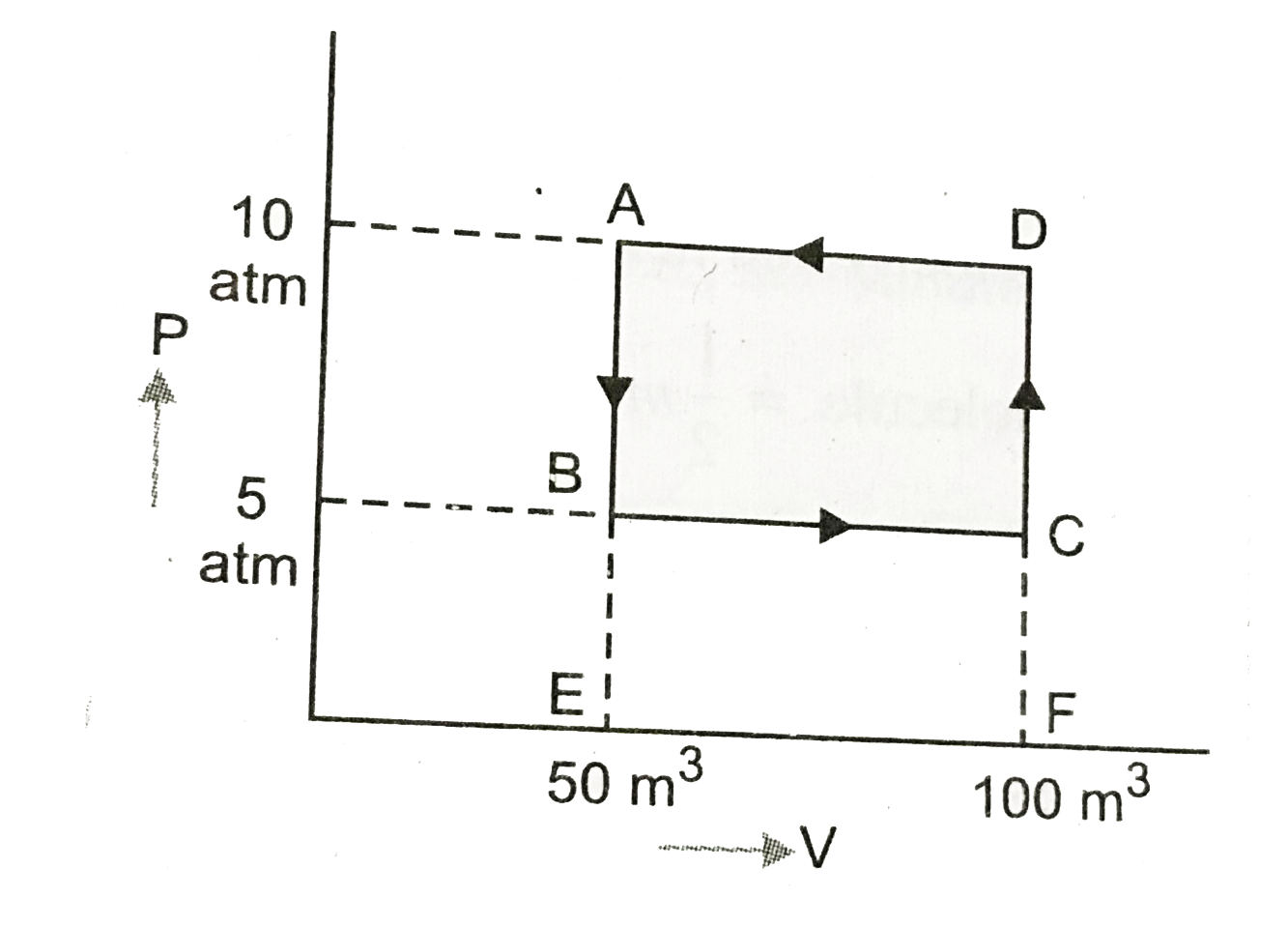
(i) In process A to B, volume is constant
∴dWAB=P.dV=Zero
In process BC
dWBC=areaBEFC=BE×BC
=(5×1.013×105N/m2×50)J
=2.53×107J
In process CD, volume remains constant
∴dWCD=P.dV=Zero
In process DA
dWDA=areaAEFD=AE×EF
=(10×1.013×105)×(−50)
=−5.06×107J.
(ii) Net work done in complete cycle ABCDA
dW=dWAB+dWBC+dWCD+dWDA
=0+2.53×107+0−5.06×c107
=−2.53×107J
(iii) As the process is cyclic, dU=0.
From first law of thermodynamics
dQ=dU+dW
=0−2.53×107=−2.53×107J
Negative sign shows that this much heat is rejected in one complete cycle.
Topper's Solved these Questions
- THERMODYNAMICSBook:PRADEEPChapter:THERMODYNAMICSExercise:Very short answer questions(NCERT)
Explore 5 Videos
- THERMODYNAMICSBook:PRADEEPChapter:THERMODYNAMICSExercise:Short answer questions(NCERT)
Explore 6 Videos
- THERMODYNAMICSBook:PRADEEPChapter:THERMODYNAMICSExercise:Long answer questions
Explore 11 Videos
- SYSTEMS OF PARTICLES AND ROTATIONAL MOTIONBook:PRADEEPChapter:SYSTEMS OF PARTICLES AND ROTATIONAL MOTIONExercise:Assertion- Reason Type questions
Explore 20 Videos
- WORK, ENERGY AND POWERBook:PRADEEPChapter:WORK, ENERGY AND POWERExercise:Assertion-Reason Type Questions
Explore 24 Videos
Similar Questions
Knowledge Check
One mole of an ideal mono-atomic gas is taken round cyclic process ABCD as shown in figure below. Calculate
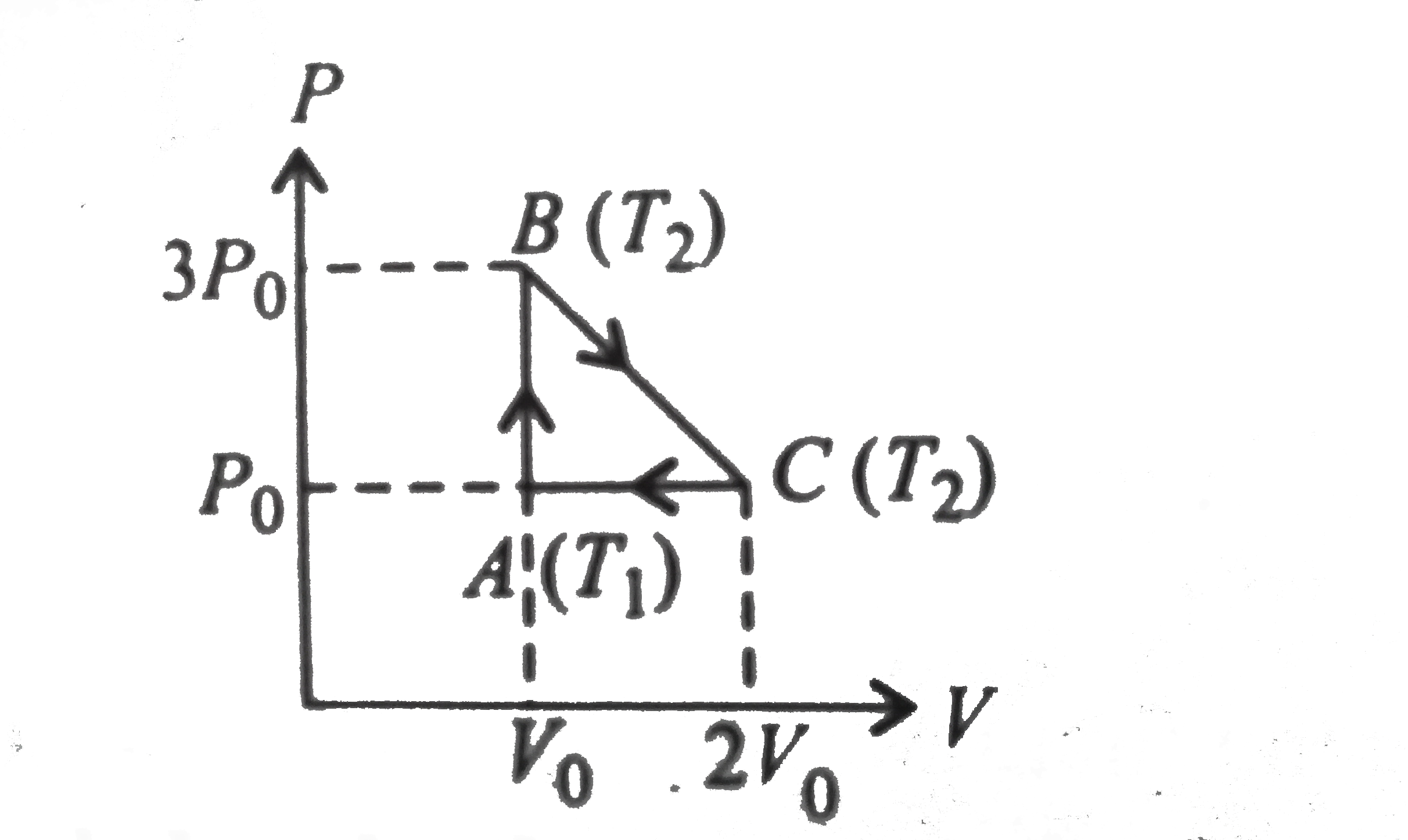 AThe work done by the gas.BThe heat rejected by the gas in the path CAand the heat absorbed by the gas in the path AB.CThe net heat absorbed by the gas in the path BC.DThe maixmum temperature attained by the gas during the cycle.
AThe work done by the gas.BThe heat rejected by the gas in the path CAand the heat absorbed by the gas in the path AB.CThe net heat absorbed by the gas in the path BC.DThe maixmum temperature attained by the gas during the cycle.The work done by a gas taken through the closed process ABCA, see figure is
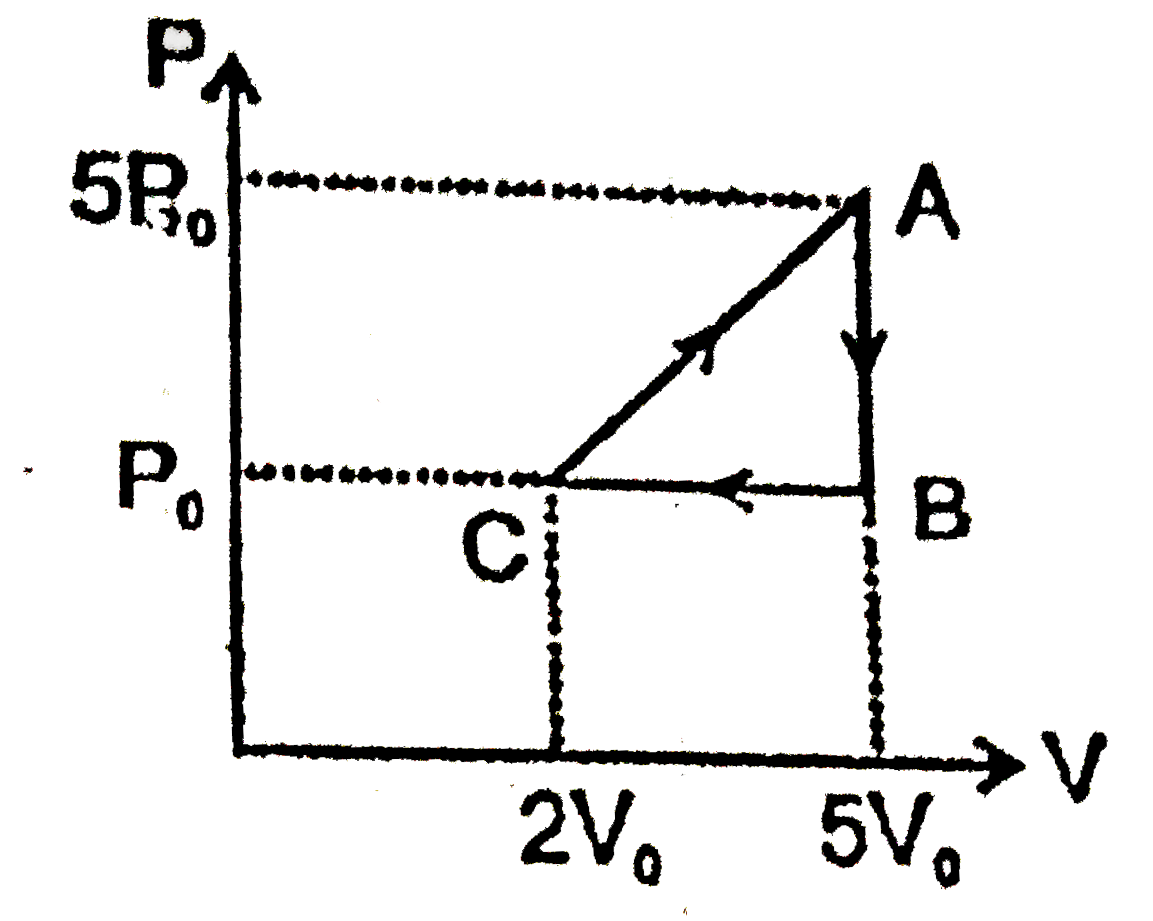 A6P0V0B4P0V0CP0V0Dzero
A6P0V0B4P0V0CP0V0DzeroFind the work done by gas going through a cyclic process shown in figure?
 A−225π2kJB−125π2kJC−200π3kJD−325π3kJ
A−225π2kJB−125π2kJC−200π3kJD−325π3kJ
One mole of an ideal gas undergoes a cyclic change ABCDA as shown in (figure). What is the net work done (in joule) in the process? Take 1atm=105Pa.
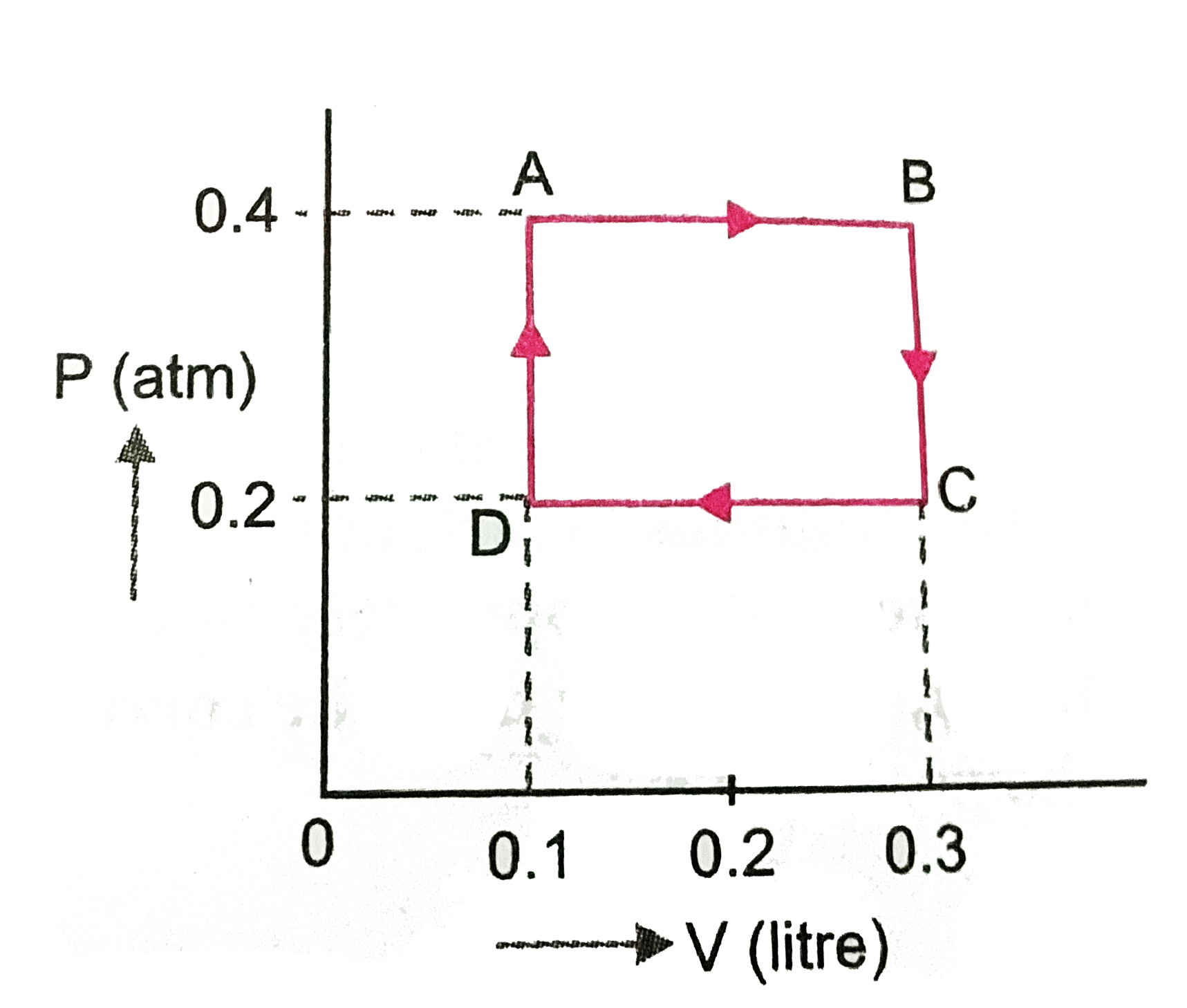
View SolutionAn ideal gas is taken around the cycle ABCD A as shown in figure . The net work done during the cycle
is equal to :

View SolutionA sample of ideal monoatomic gas is taken round the cycle ABCA as shown in the figure. The work done during the cycle is
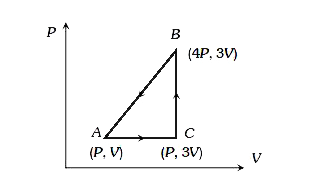
View SolutionA sample of an ideal monoatomic gas is taken round the cycle ABCA as shown in the figure the work done during the cycle is
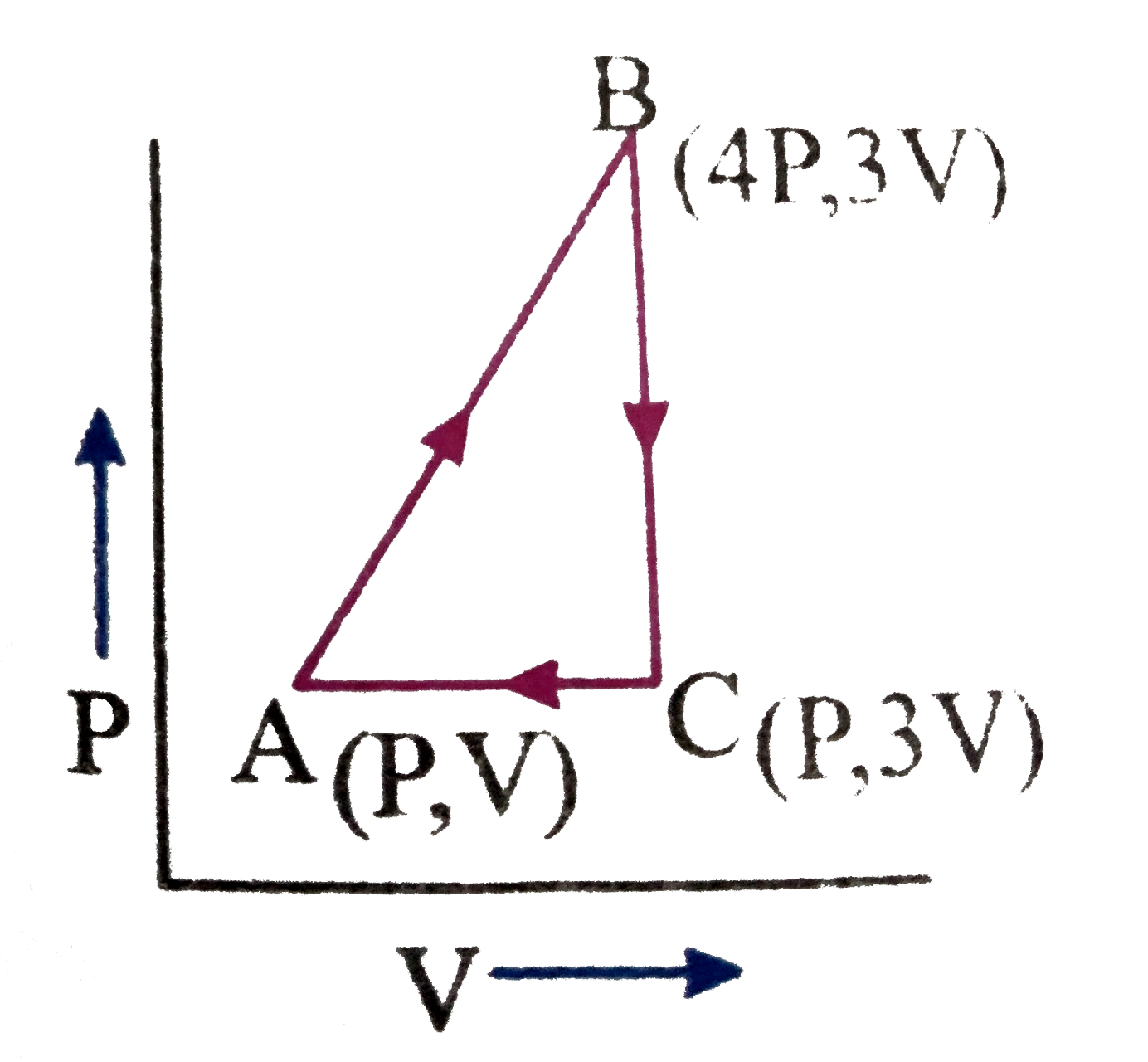
View SolutionOne mole of an ideal gas is carried through the reversible cyclic process as shown in figure. The max. temperature attained by the gas duing the cycle
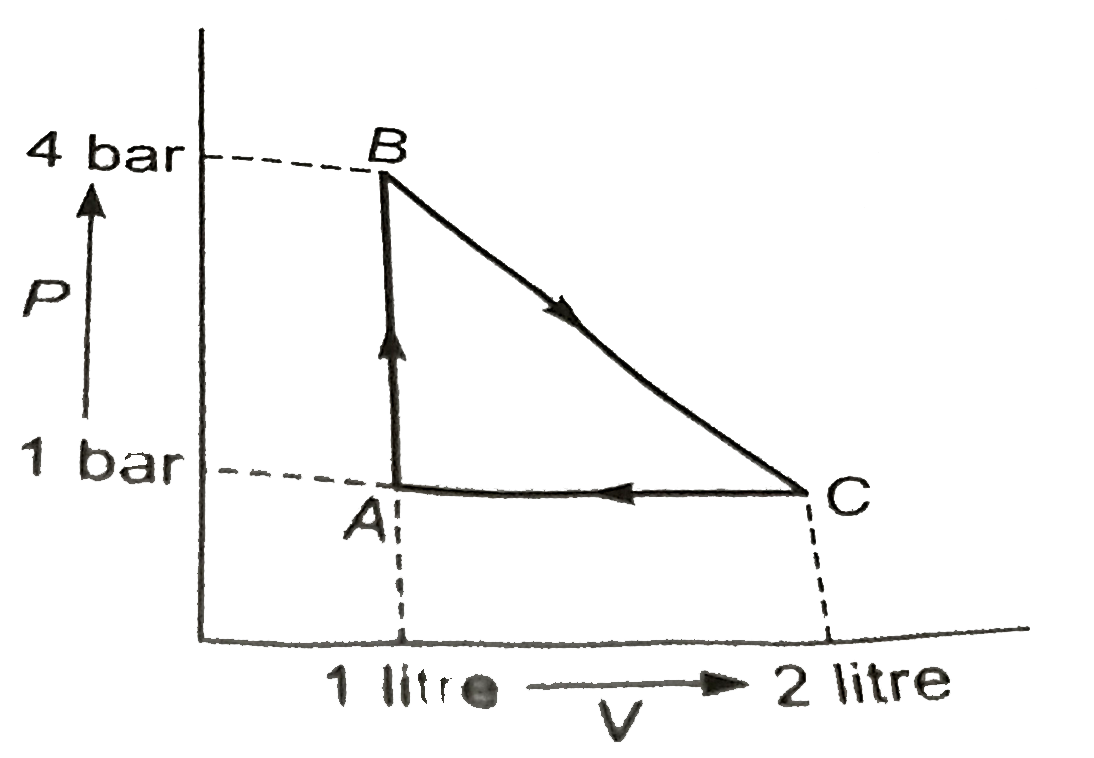
View Solution



